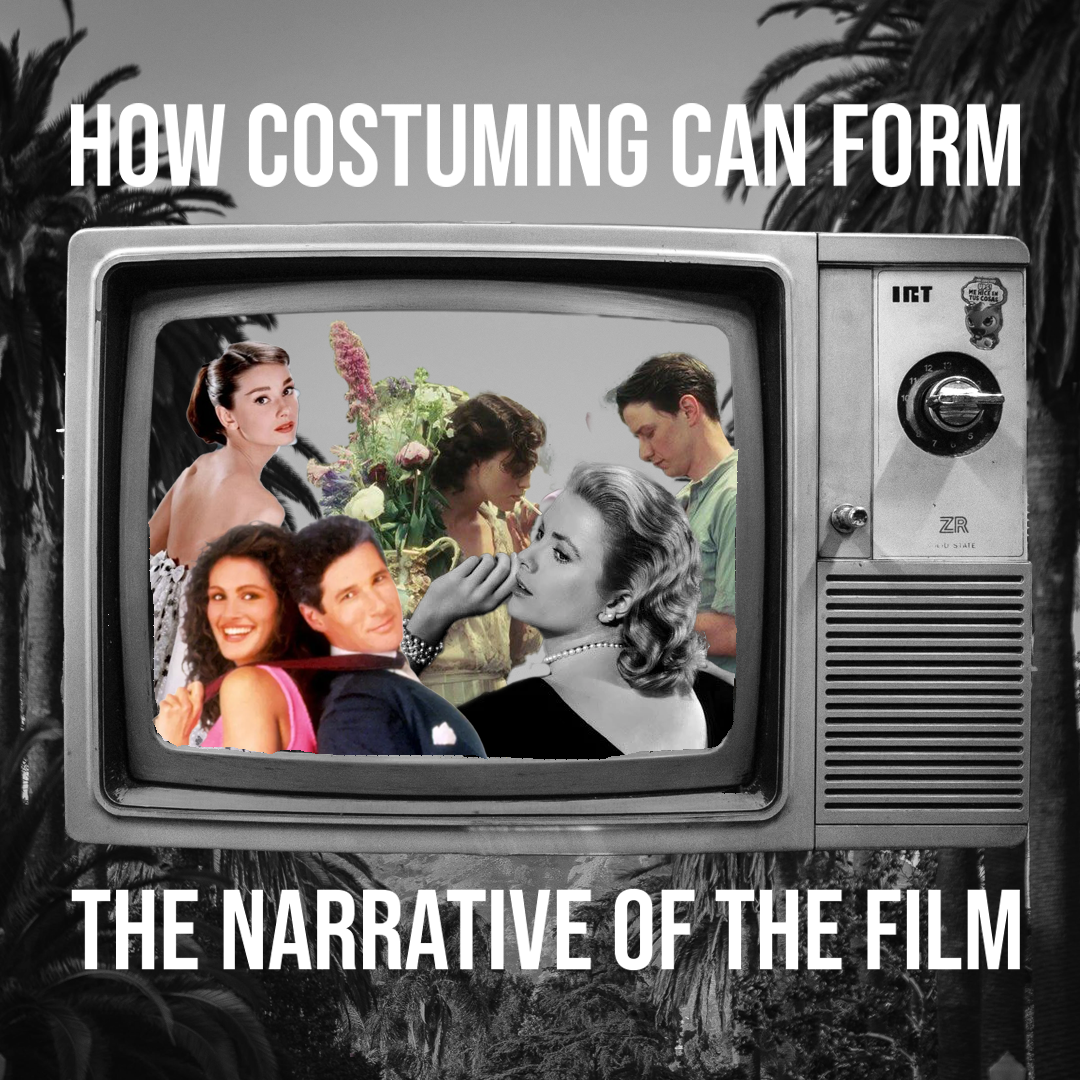Dressed to Film: A Guide to Fashion in Film
Written by Rana Rastegari
Graphics by Lily Hobl
Remember the green dress worn by Keira Knightly in “Atonement”? Or the montage of Anne Hathaway in New York, running to Miranda Priestly’s office in “The Devil Wears Prada”? What about the iconic black Givenchy that graced the silver screen by Audrey Hepburn in “Breakfast at Tiffany’s”? There is no end to the list of monumental fashion moments on the big screen, each offering a different angle for the unfolding plot of the movie. From Cult Classics to Golden Age Glamour, this piece will take you through some legendary costuming decisions and how they play into the narrative of the movies.
The costume design and styling of a film can be an ode to the characterisation, the relationships or perhaps the periodic setting of the film. Directors employ the use of the artistic direction of costume designers to bring the story together, to create an obvious or subtle portrayal of meaning and narrative of the plot. One of the most famed costume designers in Hollywood, Edith Head, worked alongside Alfred Hitchcock on “Rear Window” and created perhaps some of the most iconic looks in film history. Grace Kelly’s character, a wealthy and sophisticated woman called Lisa, is characterized through her attire. One of the most memorable ensembles of the film, Lisa’s black and white dress, paired with a simple string of pearls and scrappy heels is designed to showcase her sheer charm and feminine. The deep V-neck allows for a seductive and playful element to the character's posh demeanour. The sophisticated colours alongside the full tulle skirt with floral detailing contrast Jeff’s simple and incomparable plain blue pyjamas. The difference between the costuming of the two characters highlights the distance between them. Lisa wants Jeff to marry her, whereas he has negative views about marriage and settling down. The conflict within the relationship is depicted via their outfits.
Joe Wright’s 2007 masterpiece “Atonement”, styled by Jaqueline Durran is a dreamy exploration of love, war, lies and family in 1930’s England. The first part of the movie, focusing on the events of a single day that changes the trajectory of the lives of the characters, is set on the hottest day of the summer 1935 where a dinner for the family reunion is being prepared. Cecelia Tallis, the older and intelligent sister, is introduced to us dressed in a light purple, almost nude, blouse with lace detailing and a nude skirt. The lace and soft silk of the ensemble set up the personal and sensual atmosphere that soon follows. In the next scene, after jumping into the fountain, she is left in a drenched silk slip, again detailed with a lace front. Cecelia’s costuming acts as a vehicle for the story, abiding by the social structure of upper class English society in the 30’s but allowing the details to represent her intimate relationship with Robbie. Her floor length green silk gown, designed with asymmetrical ruching at the waist and a low back is romantic in all its glory. The dress allows for unrestricted movement and as Cecelia professes her love for Robbie, the emerald silk fabric flows sensually as she runs to him. Durran’s artistic direction through the film allows for the costumes to represent the relationships between characters but also subtly subvert social stereotypes of female sexuality.
But costume design doesn’t always have to represent the reality of a film. The whimsical and otherworldly elements of costuming are crucial for the creation of an escapist phenomenon in movies. Tim Burton’s “Alice in Wonderland” is a prime example of how costume design can elevate the plot of a movie. Essential to the story of “Alice in Wonderland” is the madness (of the characters and of their clothes). To achieve this, Colleen Atwood took elements from Lewis Carroll's original sketches and added a modern twist to the ensembles. Alice’s iconic blue dress, for example, was worn without a corset or a petticoat, contrary to Victorian custom. And as she fell through the rabbit hole her refined blue dress transformed into a modern halter neck romantic gown with frill detailing. Atwood wanted Alice’s costumes, in their free flowing movement, to represent her free spirited character. Contrary to Alice’s slightly more human costuming, the Mad Hatter was dressed in bright colours from orange to fuchsia, all contrasting his pale skin tone. His top hat, another Victorian symbol, was enlarged to make him look more whimsical and the rest of his outfits took on avant-garde forms of traditional Victorian society clothing.
Whether realism or surrealism, there can be no argument to the importance of costume design in film. Able to dictate the trajectory of the plot or represent the inner workings of each characters mind and the connections between each character, the role of the costume designer in films is one of utmost importance.



